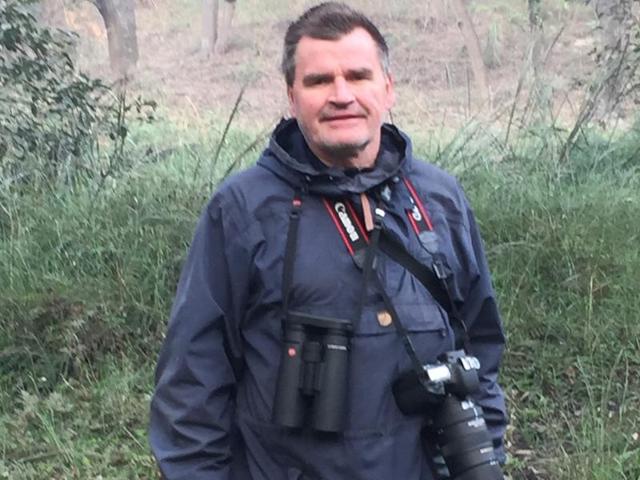Wild buzz: Harike under siege
Like a cosy blanket one loathes to shrug off in deep winter, the fog refused to clear over the Harike wildlife sanctuary during the morning of December 18. A small group, accompanying Swedish birder Per Undeland, advised a retreat to the canal rest house. That infuriated Undeland, who declared that he had not come all the way to cool his heels at the rest house, sip tea and indulge in birding gossip. So, off he marched with the others in reluctant tow into a shrouded 60-acre woodland just off the Harike barrage to spot passerine birds. That is Undeland for you, the field researcher who truly mapped the avian diversity of Harike’s riverine wilderness during his employment as a quality assurance manager at the Nestle factory, Moga, from 1993 to 1998. He had then discovered umpteen new bird records for Punjab and a handful for India. His generosity for bird causes and funding needy, devoted birders is legendary. He also has been a BirdLife Species Champion (sponsor) for the Great Indian Bustard since January 2013.
Like a cosy blanket one loathes to shrug off in deep winter, the fog refused to clear over the Harike wildlife sanctuary during the morning of December 18. A small group, accompanying Swedish birder Per Undeland, advised a retreat to the canal rest house. That infuriated Undeland, who declared that he had not come all the way to cool his heels at the rest house, sip tea and indulge in birding gossip. So, off he marched with the others in reluctant tow into a shrouded 60-acre woodland just off the Harike barrage to spot passerine birds. That is Undeland for you, the field researcher who truly mapped the avian diversity of Harike’s riverine wilderness during his employment as a quality assurance manager at the Nestle factory, Moga, from 1993 to 1998. He had then discovered umpteen new bird records for Punjab and a handful for India. His generosity for bird causes and funding needy, devoted birders is legendary. He also has been a BirdLife Species Champion (sponsor) for the Great Indian Bustard since January 2013.


Undeland and his birding buddy from Jaipur, HS Sangha, counted 135 species from the morning of December 17 to the noon of December 19 during their current visit. I asked Undeland what changes he discerned at Harike since the 1990s. The 86 square km sanctuary, recognised as a Ramsar site, was very clearly getting hemmed in, said Undeland. The old marshes were gone. The cultivation was very intense and the habitat of the Sykes nightjar downstream of Harike barrage was under severe disturbance. Ravana-like columns of power transmission towers marched across imperiling bird flights. The river floodplains, which were fine sites for such rarities as the Pectoral sandpiper, were firmly under the heel of development. Plastics flooded the Harike barrages. Traffic noise pollution on the Harike-Amritsar highway, along the sanctuary, had increased exponentially, remarked Undeland. The river embankments seemed stronger, he said, preventing floods from breaching and forming seasonal wetlands ideal for migratory ducks, waders etc.
As we went up the Beas and Satluj on motorboat on December 17, Undeland seemed relieved. The core sanctuary area was less troubled though Sangha pointed out that the increasing intrusion of cattle threatened elephant grasses preferred by such rarities as the Sindh Jerdon’s babbler. Upon hearing that nearly 850 acres of his beloved sanctuary were under encroachment, the reaction was as if his soul had been pierced deep by an arrow and he retreated into one of his brooding silences.
Many missing musicians
Further downstream of the Harike barrage is a patch of the forest department land, unfenced and unguarded. In the winters of the 1990s, Undeland would look up to a sky graced by migratory raptors such as the Peregrine falcon, Merlin, Steppe eagle etc. Field birds such as the Black Kite, Hoopoe, Indian Roller, Black Partridge (francolin) were common. In this current visit, the raptors of the open countryside had all, but vanished. The fields, overdosed with pesticides, provided no rodents for raptors and had turned into killing fields for common birds.
A handful of Grey Partridges (Francolins) called valiantly to challenge the countryside’s silence, like an orchestra with many missing musicians. There were no scattered feathers, no tombstones that scripted an elegy for these avians exterminated and banished from the green, mirage-like tracts of cultivation. Only memories and notes in Undeland’s old field jotting books remained as witness. “This is a ‘silent spring’ for the birds of Harike,” remarked Undeland, borrowing from Rachel Carlson’s iconic treatise on birds annihilated by pesticides.

What relieved the gloom was the sighting of 10 long-eared owls, a migratory bird extremely rare to spot. This owl is as reclusive as Greta Garbo and prone to snuggling in thickly-foliaged trees. A lone short-eared owl and an Indian eagle owl also brought some cheer. But the woodland was under intense disturbance through tree cutting, cattle grazing and grazier dogs, indulging in the proverbial bark up the wrong trees. Would Undeland get to see the owls on his next Harike visit?
The other 60-acre woodland near the barrage, fenced wisely by such stalwart officers of yore as then director, wildlife, Gurmit Singh, had matured, was full of birds and least disturbed. The songs of small birds may sound like the arias of a complex Wagner opera to the uninitiated ear, but Undeland picked each one with precision. There were Red-breasted flycatchers, Hume’s leaf warblers, Lemon-rumped warblers, Olive-backed pipits and hordes of Cinerous tits and Long-tailed minivets. There was a rarity, an Orange-headed thrush, flipping fallen leaves for a breakfast snack.
At the sluice gates of the Ferozepur and Rajasthan feeder canals, Undeland was joyous after spotting the Wallcreeper feeding on insects in the nooks of dank chamber walls. The Wallcreeper was Undeland’s old soul mate from the 1990s, a charismatic mountain species which pitches camp at the Harike sluices every winter.
vjswild1@gmail.com



